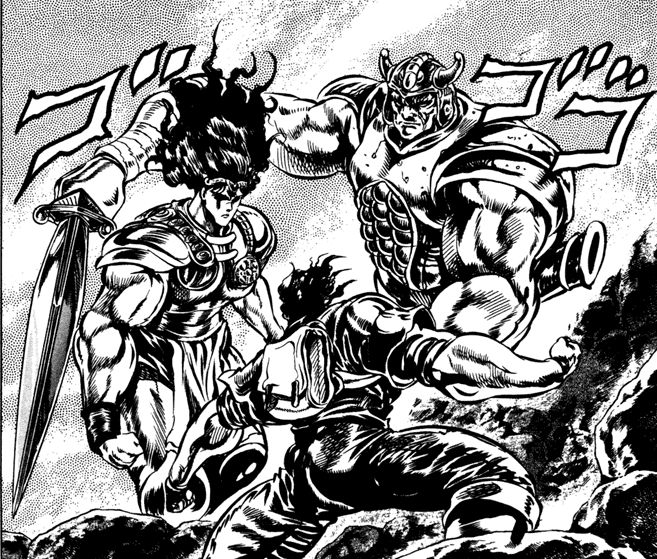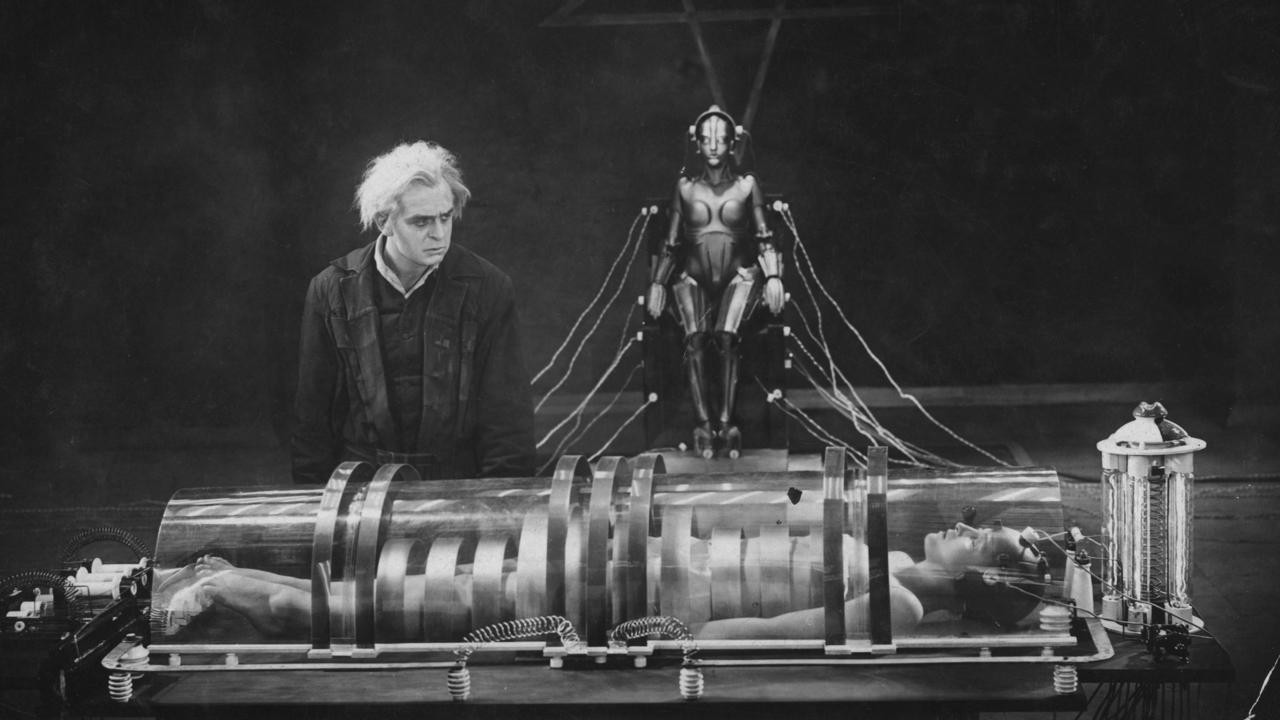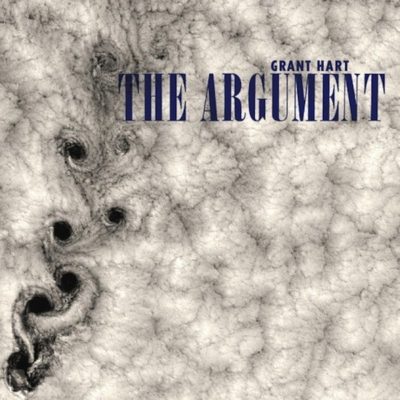Some people become JoJo fans naturally; I was forcibly converted. I was part of a movie-watching group and whenever we ran out of material our host would inflict JoJo marathons on us. I still recall his mounting panic when we didn’t share his enthusiasm (“…this gets really good around Stardust Crusaders, I promise!”)
It took me a long time to like JoJo, and even now I’m not a superfan. But I “get” what it’s about. Not in the sense of plot (a cursed mask, sibling rivalry, an ancient blood debt), but what it’s really about: the glory of the West. Or, less politely, weebishness in reverse.
Traditionally, weebs are white kids who are fascinated by Japan (or the Japan they see in anime) and assign various romantic ideals upon it. The stereotypical weeb is overweight, undersocialized, a disappointment to his parents, and a failure with women – he holds no love for the place of his birth. Japan represents a kind of Avalon to him, an isle across the waters where nerds and misfits are accepted.
Hirohiko Araki is an anti-weeb: a Japanese person who’s in love with Western culture. I guess the bamboo is always greener on the other side. Japanese authors are often attracted to a certain element of Western culture (Edogawa Rampo loved the Gothic movement, Yukio Mishima loved fascism, Haruki Murakami loves bohemians) but Hirohiko Araki’s tastes are exceptionally omnivorous. He loves everything about us.
JoJo’s Bizarre Adventure is about rockstars, pirates, highwaymen, knights, athletes, gangsters, gamblers, and rakes. Everyone’s an archetype of masculinity, cool beyond cool, a muscular, flamboyant ubermensch. JoJo takes Western machismo and exaggerates it to cartoonish, absurd levels.
It’s pretty gay at times. I don’t know whether JoJo’s homoeroticism was intended, but it’s striking that the manga has one female character, and she’s passive and pathetic, serving as a prize for the strutting male peacocks to fight over.
The love weebs have for Japan is often an intellectually shallow one, and they tend to get stuff wrong. Hirohiko Araki gets details about western culture wrong, too. For example, the villainous Dio resurrects a pair of medieval warriors, Brufold and Tarkus, to help kill Jonathan Joestar. We’re told that they’re knights who served Mary, Queen of Scots…but neither of them look like knights. Tarkus (left) is armored like a Roman Centurion. Brufold (wearing a horned helmet) is clearly modelled after a Viking warrior. These are not knights.

Or consider the family name, “Joestar”, which sounds jarringly wrong to the Western ear – people don’t have surnames like that. It reminds me of the infamous Fighting Baseball player roster, where a Japanese game programmer had to invent a bunch of American-sounding names and came up with “Sleve McDichael” and “Bobson Dugnutt”.
But realism isn’t important in JoJo. Perhaps hyperrealism is, though: everything given a little push over the cliff (in the words of Nigel Tufnel). JoJo is the world of could-have-been truths that are exaggerated to compensate for the fact that they never existed.
Obviously a name like Dio Brando gives the game away – a stilted amalgamation of a heavy metal rockstar and a Hollywood actor. As is the character of Zeppeli, who is visually modelled upon Salvadore Dali. JoJo often surprises the reader with its degree of literacy and wit.
I enjoyed the start of Phantom Blood more than the end. The way Dio Brando whiplashes from gentlemanliness to psychotic brutality is hilarious and shocking, and puts the reader squarely in Jonathan’s corner. And the “down-to-earth” nature of the tale was pleasant: something gets lost when the hero is battling a sentient hairstyle.
The final few volumes sort of blur together. Jonathan faces a threat, learns a new power or ability to overcome it, faces an even bigger threat, learns a new power or ability, and so on. It’s like a treadmill that speeds up all the time – soon you’re tired and want to get off. It was probably more enjoyable in its original run, where the repetition is less obvious. Probably better as an anime, too, where colours and music help establish JoJo’s mojo. I’m curious to see where the Joestar family goes next: hopefully a Jonathan Joestar vs Sleve McDichael crossover.
No Comments »
The Argument, Grant Hart’s final solo album, was released in 2013, four years before his death.
Who is Grant Hart? If you know him at all, it’s probably as “the less famous guy from Hüsker Dü”. There are worse obituaries, but if you ask a group of children who they want to be when they grow up, few will say “the less famous guy from Hüsker Dü”. Not many will say “the more famous guy from Hüsker Dü” for that matter, either.
Hart deserved better than he got. Overshadowed both by Bob Mould’s pyroclastic distorted guitar chords and forceful personality, it was easy to see him as a lesser talent. But one day I took stock of my ten favorite Hüsker Dü songs, and about seven of them were written by Hart. From “The Girl Who Lives on Heaven Hill” to “She Floated Away” to his solo albums, he was a genuinely brilliant pop songwriter.
And he was weird. Bob Mould would never and could never have made The Argument.
It’s a 20-song adaptation of Milton’s Paradise Lost, based on a treatment by William S Burroughs. It sounds (and is) cheaply made, consisting of noisy guitars, synth loops, and found sounds apparently recorded around Hart’s house (such as a barking dog). Seldom has such ambition been realised through such humble material. Hart has created a tableaux of the Original Sin out of carpet fluff, dryer lint, and spilled breakfast cereal.
There’s not a trace of hardcore punk to be seen, and little alternative rock. It’s just Grant Hart’s stripped-back and heartfelt (Hartfelt?) songwriting, which always seemed to exist beyond influences. Sometimes the cheapness of the album works against it: “Morningstar”, for instance, features a loud programmed drum loop. It’s distracting, and all I can focus on. But far more often than not an entrancing mood appear. “Awake, Arise” is dire, and builds up like a thundercloud. It’s followed by “If We Have The Will”, a military march of painted toy soldiers written in 9/8 time. “Sin” goes heavy on the blues.
By the time “Letting Me Out”, “Is the Sky the Limit?”, and “So Far From Heaven” roll around, the album is (metaphorically) on fire. None of these songs contain a single dull or uninspired moment. “War in Heaven” is woven from agonizing jagging synths and samples. “Underneath the Apple Tree” is focused around lyrical storytelling – Grant Hart’s devil is far more avuncular and likeable than the Rolling Stones’ or Marilyn Manson’s. The six minute title track is boring and can be skipped. But the album ends on a high note, the energetic and frantic “Run For the Wilderness”.
One of Hart’s goals for the adaptation was to remove explicit references to religion – a blind listener might not even make the Paradise Lost connection. Lyrically, the story jumps around a bit and is kind of out of order. I think he might have taken inspiration from CS Lewis’s The Screwtape Letters – you think you’re reading the demonic missives in chronological sequence, but the celestial method of dating need not overlap with that of mundanity.
But mostly, Hart hasn’t recreated the world of Milton, or Burroughs, or even Moses, but has created a self-referential cosmos that’s entirely his own. Obsessive, detailed, and tuneful: The Argument could be a concept album about its creator’s mind. Grant Hart is gone, but will not be forgotten. Hüsker Dü. Do you recall?
No Comments »
A doorstop-sized work of historical fiction from 14th century China. At eight hundred pages, nearly a million words, and a thousand named characters, it has broken hardier men than you. Romance of the Three Kingdoms is one of those Mount Everest type books – can you possibly finish it?
It’s also the world’s first videogame. Explanation incoming.
Sometimes art has content that suggests it belongs to a different medium. For example, the first film directors had a background in theater, and the movies they produced are often stunningly derivative of stage plays.
Watch a film from the 1920s and you’ll see lengthy static shots, minimalist editing, flat and declamatory acting, etc. Only in the middle period of Hollywood’s golden age did the techniques and approaches of film qua film emerge. Early films didn’t leave the vaudeville behind: they’re well made, but…they’re not exactly movies.

Romance of the Three Kingdoms is like that, but instead of being a play disguised as a movie, it’s a videogame disguised as a book.
More specifically, a strategy game. It reminds me of a six hour Age of Empires II game fought between skilled and stubborn adversaries amidst a mounting pile of energy drink cans. Battles without end. Thousands of men thrown into a woodchipper, often gaining nothing, or winning a victory that gets reversed minutes later. Numberless acts of heroism, which you see from God’s perspective and soon don’t even notice.
It’s about the fall of the Han dynasty and the three kingdoms (Wu, Wei and Shu) that ascended in the aftermath, trying to fill the power vacuum. They do this through a complex and Machiavellian mix of marriage, wizardry, and battles so bloody that it seems the population of medieval China gets slaughtered three times over.
The famous opening line “The empire, long divided, must unite; long united, must divide. Thus it has ever been” was not written by Luo Guanzhong, but was added centuries later. Nonetheless, it sums up his text: cyclical periods of destruction and renewal. Events are either meaningless or all-meaningful, depending on your perspective. There’s nods to “empty boat” style Taoist philosophy at times. The soil drinks blood. The soil then produces trees. The trees are used to make axes. The axes…
It’s hard to describe Romance without making it sound like the dullest book ever. It’s not. Nor is it the second dullest book. It’s actually interesting, once you crack the “code”.
The worst way to read it is like a traditional novel. Forget rising and falling action, dramatic climaxes, etc. Romance of the Three Kingdom’s intense moments come out of nowhere like monsoons, blow the lives of characters to pieces, and then end. Also, large parts are based on history, which is under no obligation to be satisfying to anyone. A better way is to view it like a growing plant: continually evolving in a way that’s no more and no less sensible than real history or the life of the reader.
And it’s thrilling. Despite the nihilism of the whole, you’ll still feel tense when Cao Cao fails in his plot to assassinate Dong Zhuo, and cheer at cunning method Zhou Yu uses to overcome an enemy fleet. Certain moments (such as the Battle at the Red Cliff) are as cinematic as Game of Thrones. And there are passages that would fascinate anyone with an interest in cultural anthropology and medical history. For example, the great hero Liu Bei’s reaction when he sees weapons inside his bridal apartment.
The bridegroom turned pale. Bridal apartments lined with weapons of war and waiting maids armed! But the housekeeper of the lady said, “Do not be frightened, O Honorable One! My lady has always had a taste for warlike things, and her maids have all been taught fencing as a pastime. That is all it is.”
“Not the sort of thing a wife should ever look at,” said Liu Bei. “It makes me feel cold, and you may have them removed for a time.”
[…]
Lady Sun laughed, saying, “Afraid of a few weapons after half a life time spent in slaughter!”
One wonders at what Luo Guanzhong is trying to depict here. Is Liu Bei suffering from what we today call Post-Traumatic Stress Disorder?
The biggest challenging to climbing Mt Romance is the colossal cast of characters. To reach the end, you need to develop a sixth sense as to which characters are important to the plot and which ones will never be seen again. A lot of the characters have similar names. It can be hard to separate Zhang Fei from Zhang He. Maybe I’m a racist colonial paleface who thinks all Chinese names sound the same. But maybe not – Luo Guanzhong seems to be winking to the reader at times, such as in this (humorous?) scene where a woman vows to only marry a man with the same name as hers:
“Why did you trouble your sister-in-law to present wine to me, brother?” asked Zhao Yun.
“There is a reason,” said the host smiling. “I pray you let me tell you. My brother died three years ago and left her a widow. But this cannot be regarded as the end of the story. I have often advised her to marry again, but she said she would only do so if three conditions were satisfied in one man’s person. The suitor must be famous for literary grace and warlike exploits, secondly, handsome and highly esteemed and, thirdly, of the same name as our own. Now where in all the world was such a combination likely to be found? Yet here are you, brother, dignified, handsome, and prepossessing, a man whose name is known all over the wide world and of the desired name. You exactly fulfill my sister’s ambitions. If you do not find her too plain, I should like her to marry you and I will provide a dowry. What think you of such an alliance, such a bond of relationship?”
Romance of the Three Kingdoms might also be an early example of the Draco in Leather Pants phenomenon. The antagonist of the tale is clearly meant to be Cao Cao of the Wei kingdom, but he’s probably the strongest and most interesting character in the story, and a lot of people seem to view him in a positive light. Tumblr, of course, has an active community of Cao Cao stans.
But Romance isn’t a character study, it’s a videogame. The market seems to back this idea up. Usually classic works of literature attract a slew of movie adaptations, and maybe a single throwaway text adventure game made in 1984 by Infocom. But according to Wikipedia, Romance of the Three Kingdoms has been adapted to film eight times, to television twenty-four times, and as a game fifty seven (!) times. The book keeps rejecting its paper and clothing itself in binary. There might be three kingdoms, but ROTTK truly belongs in the realm of ones and zeros.
No Comments »





